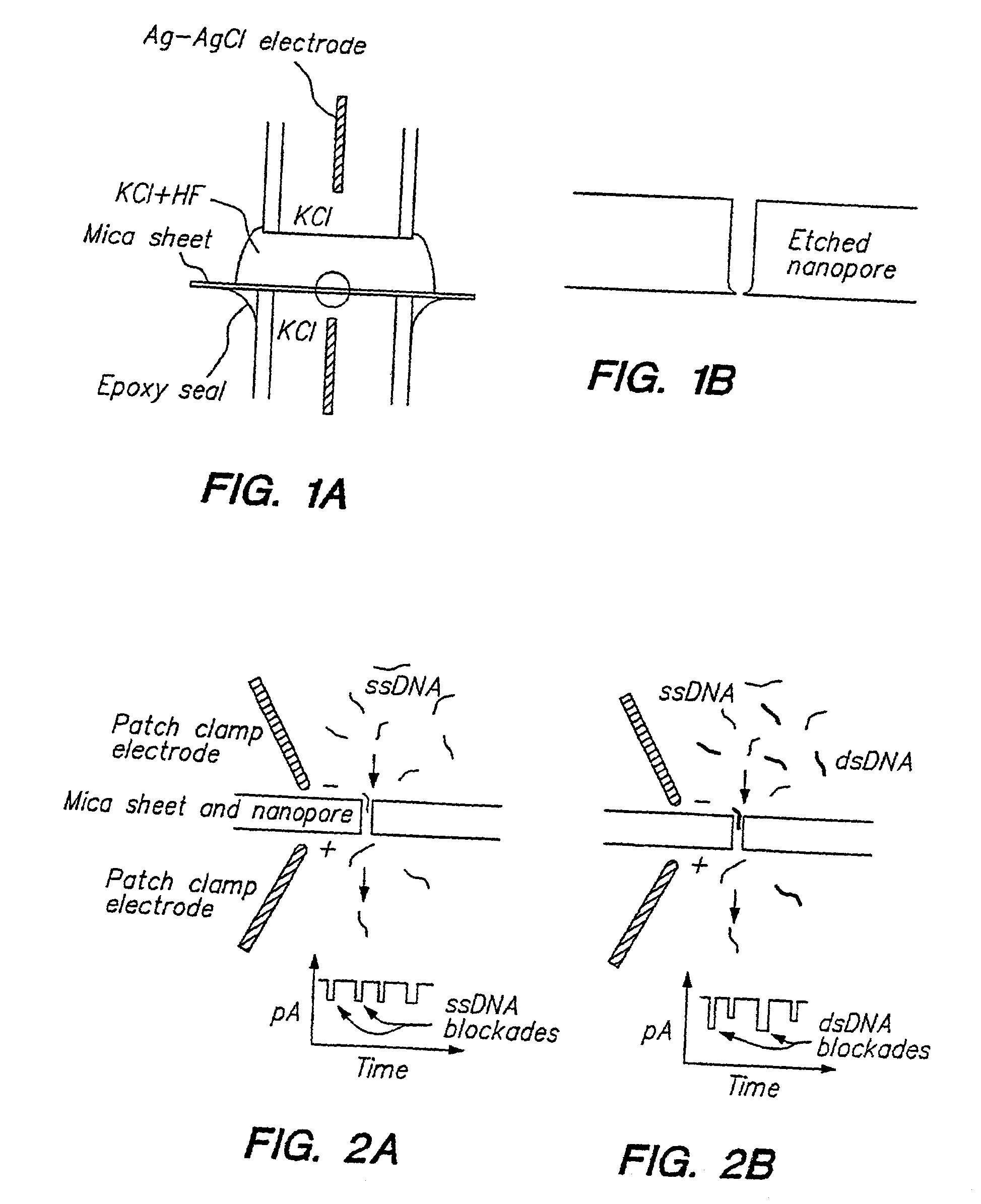Methods of determining the presence of double stranded nucleic acids in a sample
a nucleic acid and double strand technology, applied in the field of nucleic acid hybridization, can solve the problems of difficult scaling up, and difficult to obtain quantitative results with fluorescent labels
- Summary
- Abstract
- Description
- Claims
- Application Information
AI Technical Summary
Benefits of technology
Problems solved by technology
Method used
Image
Examples
Embodiment Construction
[0014] Methods for determining the presence or absence of double stranded or hybridized nucleic acids in a fluid sample are provided. In the subject methods, a sample suspected of having double stranded nucleic acids is contacted with a nanopore and nucleic acids present in the sample are sequentially translocated through the nanopore, e.g. by application of an electric field to the fluid sample and across the nanopore. The current amplitude through the nanopore is monitored during the translocation step. The presence of double stranded nucleic acids present in the sample is then determined from the measured current amplitude values. The subject methods find use in a variety of applications and are particularly useful for monitoring hybridization events in hybridization based assays, e.g. Northern blots, Southern blots, array based hybridization assays, etc.
[0015] Before the subject invention is described further, it is to be understood that the invention is not limited to the parti...
PUM
| Property | Measurement | Unit |
|---|---|---|
| diameter | aaaaa | aaaaa |
| length | aaaaa | aaaaa |
| diameter | aaaaa | aaaaa |
Abstract
Description
Claims
Application Information
 Login to View More
Login to View More - R&D
- Intellectual Property
- Life Sciences
- Materials
- Tech Scout
- Unparalleled Data Quality
- Higher Quality Content
- 60% Fewer Hallucinations
Browse by: Latest US Patents, China's latest patents, Technical Efficacy Thesaurus, Application Domain, Technology Topic, Popular Technical Reports.
© 2025 PatSnap. All rights reserved.Legal|Privacy policy|Modern Slavery Act Transparency Statement|Sitemap|About US| Contact US: help@patsnap.com


